We all have gaps in our pop culture knowledge, those omissions that elicit gasps from our fellow funnybook connoisseurs. For me, those gaps are vast and constitute anything outside of DC Comics proper. I’m on a mission to rectify my comics knowledge shortcomings and to provide a fresh take on classic stories that others have known for years. The comics may be old but my mind is still pure, wrapped in plastic and sitting on the shelf, waiting to be opened. Welcome to Mint Condition!
This time: Let’s check out some classic wall-crawler stories!
 BACKGROUND
BACKGROUND
The skinny: I knew I wanted to tackle Spider-Man for this column, but where to start? Our favorite wall-crawler has starred in an awful lot of comics in the past 50 years so there’s a lot to unpack. Having had my fill of 1960’s Stan Lee comics via my deep dive of Fantastic Four, I decided to skip ahead to the next significant landmark in Spidey history. I didn’t have to go too far, as a nineteen-year-old Gerry Conway took over the reins from Stan in 1972 and wrote some classic web-slinging adventures that every true Spider-fan should recognize.
Issues read: For this one I went through Gerry Conway’s entire (original) run, found in Amazing Spider-Man #111-149, as well as Giant-Size Super Heroes #1. The easiest way to get your hands on these 1970’s issues is through the “Marvel Masterworks” reprints of ASM, volumes 12-15. Also included in those collections are Stan Lee’s issue #110, which is the first half of the arc that Conway finishes in his debut issue, as well as issues #150-155 by Archie Goodwin and Len Wein who followed.
Published by: Marvel Comics. (No, not Sony.)
Publication dates: Gerry’s first issue was Amazing Spider-Man #111 in 1972, which was the back half of an arc featuring The Gibbon and Kraven the Hunter. He wrote the series straight through for three years until 1975’s issue #149, ending on a sweet/steamy scene that finally cemented Peter’s relationship status with Mary Jane Watson. Aww.
Creators: Conway worked with a lot of collaborators on this series, so I’ll just name those who seem the most significant. Of course Stan Lee was never too far from the book, and even shared writing credits on a few issues as the young scripter found his feet. The main art credits go to John Romita, Sr., Gil Kane, and Ross Andru. One of these three gentlemen penciled (and in some cases inked/colored) every issue during Conway’s tenure. Inks and “art assist” credits go heavily towards Frank Giacoia, Dave Hunt, and Tony Mortellaro, with a sprinkling of Mike Esposito, Jim Mooney, Jim Starlin, and Paul Reinman. Colorists included Petra Goldberg, Linda Lessmann, and Stan Goldberg, and letters were done mostly by Artie Simek, John Costanza, and Sam & Joe Rosen. Roy Thomas and Len Wein edited. It takes a Spider-village.
My previous experience: Everyone knows Spider-Man. I’d read a few of the Dan Slott issues from a few years ago, but most of my knowledge is from the cartoons and movies. Embarrassing blind spot. Let’s correct it.
FIRST IMPRESSIONS
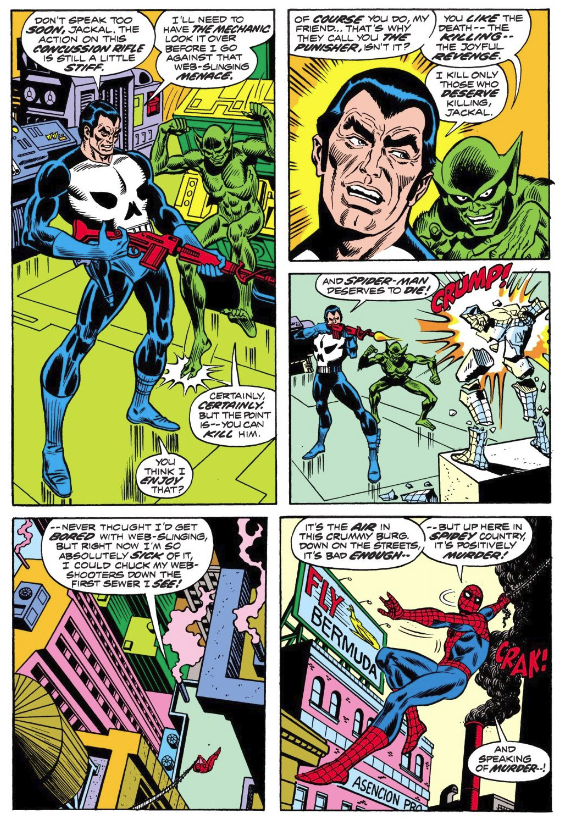
What he built — under the initial tutelage of John Romita, Sr. and in collaboration with him, Gil Kane, and Ross Andru — was incredibly impactful to not just the character, but to the comics industry as a whole. In a time of more safe, innocent storytelling, Conway and crew brought some pretty dark themes into their book, including the heart-wrenching death of the teenaged character’s girlfriend. They created the Punisher, Hammerhead, and Tarantula. They turned Harry Osborn into the Green Goblin and J. Jonah Jameson’s son into a werewolf. They staged a wedding between Aunt May and Doc Ock. Oh, and they had Peter battle a clone of himself to the death. But they also gave him a fun new Spider-Mobile, so…
The famous scene is the death of you-know-who. With the recent popularity of characters Spider-Gwen and Gwenpool, it’s a great time to learn about the original’s tragic end.
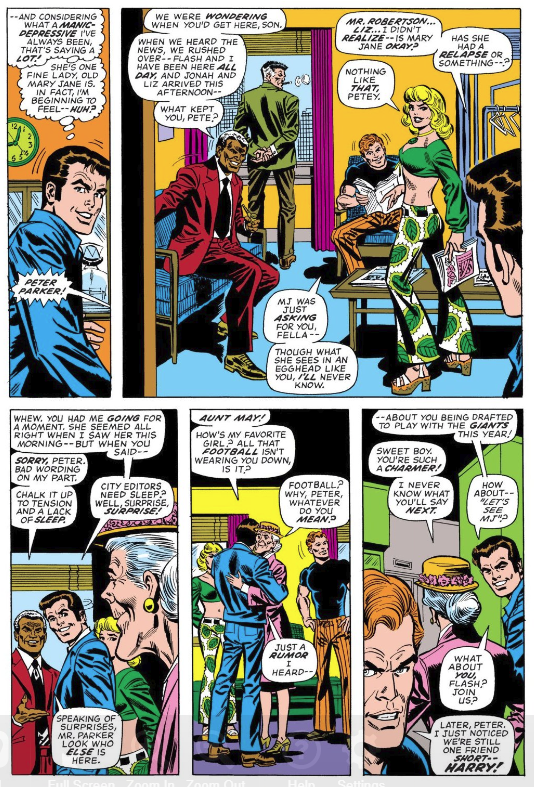
And then there’s Mary Jane Watson, who is a fascinating character. She doesn’t act at all how I expect a female comic book love interest to act, and I love it. She’s a sort-of sometimes interested party girl who does what she wants. She can be hot and cold, depending on how interesting she finds you in the moment. At the beginning of the story she is dating Peter’s roommate, Harry, but still calls Pete ‘handsome’ and ‘tiger’ like she just can’t turn it off. After Gwen’s death she helps Peter to pick up his life and move on. We love MJ.
He might crack a lot of jokes, but one thing that stands out is just how negative Peter Parker is. I mean, sheesh. From the start, this guy calls himself a loser and bemoans his bad luck before anything even happens. He’s guilt-ridden about the way he lies to Aunt May and certain his girlfriend is about to leave him for someone better. He has tortured dreams. Peter automatically assumes that things are his fault, like a knee-jerk reaction. He gets a cold and his first thought is: “With my luck it’ll probably turn into pneumonia!” After a bit of bad fortune he says to himself: “If I weren’t already one of the most depressed people alive, that’d be enough to make me want to slit my throat!” Geez, Peter.
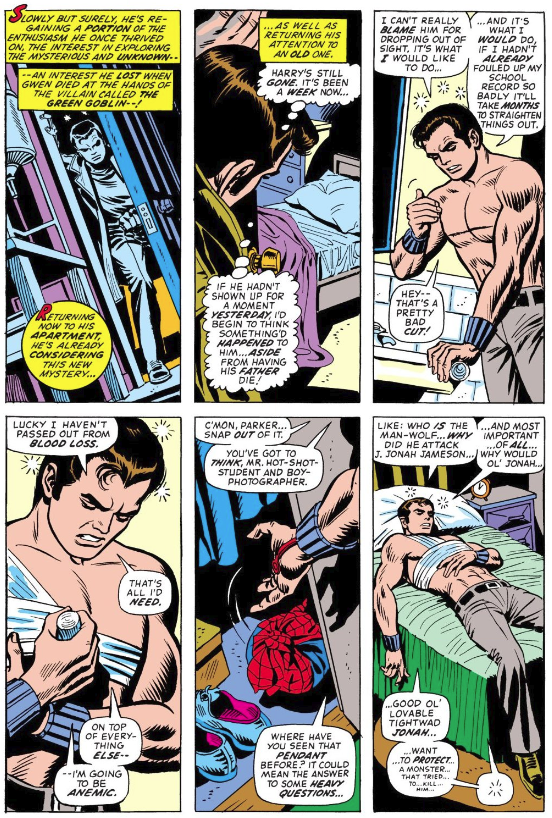
It’s also a hell of a lot of fun! Watching a hero push himself from the depths of his willpower is invigorating. Conway and his team clearly understand that victories are so much more satisfying when they are hard-won. The visual storytelling is strong. Spider-Man is a nimble, acrobatic hero who flips and swings through the city skyline with ease. He fights a bizarre assortment of supervillains, not always winning.
Of course the comic isn’t all doom and gloom, this is a Stan Lee joint! We still hear that same carnival barker tone from the narration boxes and cover copy that defined Marvel products in the 60’s and 70’s. In true Stan Lee fashion, the cover and captions make sure to point out how IMPORTANT each issue is and how you dare not miss it! The fanfare announces that issue #121 was a TURNING POINT for our tormented hero (it was) and declares that the Molten Man arc is “one of the most sensational Spidey-epics of ALL TIME!” (it wasn’t). The footnote captions are spoken in the editor’s voice, sometimes with a printed yawn, each signed with a “-RT” for Roy Thomas, so it was clear who was interacting with you through that small rectangular portion of the page. Man, there’s never been anything like the Marvel Age.
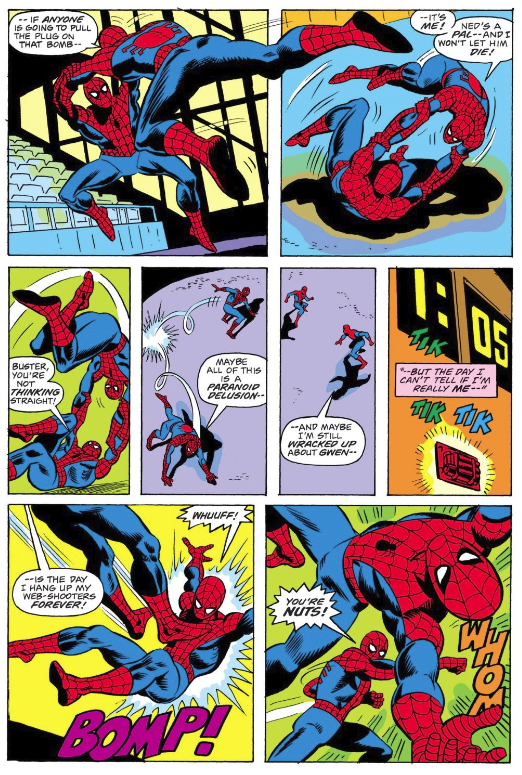
Speaking of spider-sense, what a vaguely defined ability! It’s almost a meta-editorial thing. It tells him where to look, points out strange men following him, leads him across town to bad guys, etc. Granted, we don’t know exactly what would happen if a man was actually bitten by a radioactive spider and started “doing whatever a spider can.” But I’m pretty sure spiders don’t do that. It tells him how hot things are, when someone is being mind-controlled, identifies callers. Once it helped him find money in a closet. I need to let more spiders bite me.
In the early issues, the main antagonists are Hammerhead and Doctor Octopus. They are embroiled in some kind of mob turf war, and could easily finish off Spider-Man if they weren’t so busy fighting each other. Unfortunately Aunt May becomes tangled up in their schemes, so Spider-Man can’t just stand aside while they work it out. Eventually the two villains end up blowing themselves up because they are idiots. There are lots of other evil-doers that pop in and out of the series; classic bad guys like the Vulture, Scorpion, and Mysterio (my personal favorite, btw) as well as probably a dozen original creations. Oh, and he fights the Hulk for a couple of issues, because of course he does.
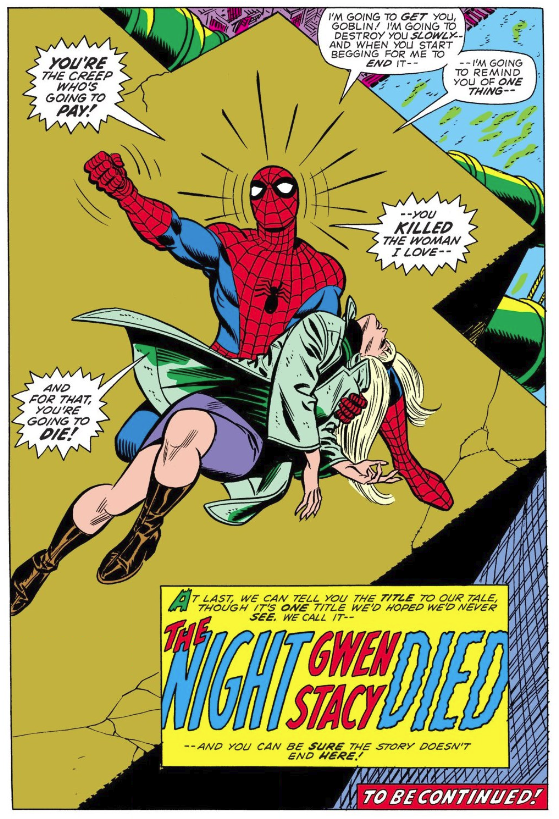
If I’m making this book sound grim, it kind of is. It’s heartfelt and raw. The tragedy of Gwen’s death leads Peter through some dark moments, and the creative team lets Peter wallow in it for just long enough for us to feel it before he slowly starts to climb out of his grief and learns to enjoy things again. A focus on Mary Jane helps, as her presence is either bubbly, flirty, or feisty at any given moment. She reveals herself as a true friend, giving Peter just enough space to process his emotions but not enough distance that he isolates himself. When their first kiss finally happens, it feels like a sigh of relief after a long, difficult day.
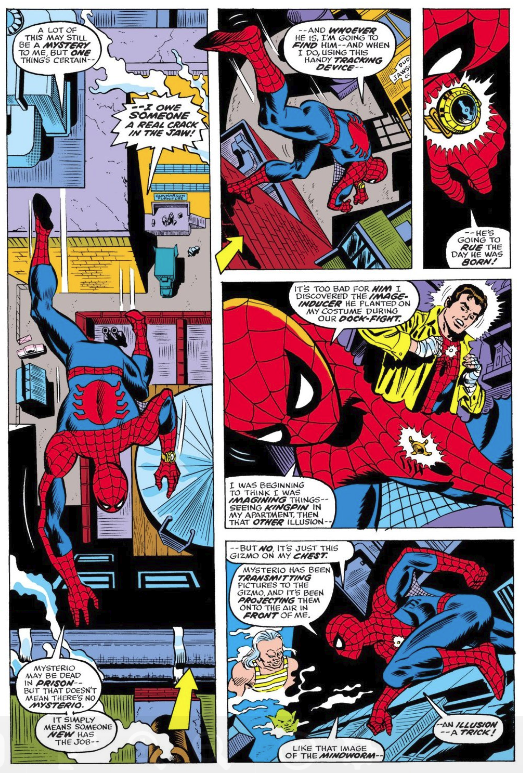
The page layouts are mostly some variation of a six-panel or nine-panel grid, with some creative inlays or gutter usage. Sometimes the panels are very tall, which gives the impression of the large buildings surrounding the scene. Since Peter can climb on walls and ceilings, we are treated with some unusual perspectives that most books wouldn’t have a plausible reason to use.
What really sets The Amazing Spider-Man apart from other books is the where and how of Peter’s crime fighting technique. Spider-Man hangs out on the New York City rooftops. Isn’t that such a cool setting? Batman has dark alleys, Green Lantern has the outreaches of space, and Spider-Man has the tops of tenement buildings. I wonder if these guys ever get tired of drawing roofs or windows or piles of broken bricks. And Spidey doesn’t just walk across the buildings, he zips quickly over and between them as he flies freely through the air. With a quick FWIP of his wrist, he can send himself hurtling to the ground or soaring skyward. In order to be a threat, his enemies have to have giant mechanical legs or hoverboards or vast destructive capabilities. It’s visually exciting.
We have to talk about the car. At one point, around issue #126, a toy company executive convinced Marvel to give Spider-Man a new crime fighting vehicle. The Spider-Mobile. My understanding is that the creative team were ordered to include the car in the story so that the toy manufacturers could market it as official merch, or something like that. Take a moment and think about how stupid it is for Spider-Man to try to drive around New York City in a branded car. Like professionals, these artists drew in the red and blue dune buggy and had Peter take it out for a spin every so often. But it really never made a lick of sense.
VERDICT
New reader accessibility: Yep. The beauty of Spider-Man is that he’s universally known. As strange as the concept of a radioactive spider-based metahuman is, you’d be hard pressed to find someone who isn’t familiar with Peter Parker. Gerry Conway’s stories have all of the familiar touchstones that the casual fan would recognize (Aunt May, Mary Jane Watson, J. Jonah Jameson) so there’s no real learning curve. Jump in anywhere, you’ll get it. I recommend issues #110-122 as the most satisfying chunk of the story.
Desire to read more: This isn’t the last you’ll see of Spider-Man in this column. There’s so much more to explore! Kraven’s Last Hunt, the Clone Wars, Venom, Carnage, all the hubbub around Pete & MJ’s marriage…I assume Aunt May probably dies and comes back with superpowers at some point, I don’t know. Let’s find out.
Final Thoughts: My spidey-sense is telling me I’ve said enough. Until next time!
Suggestions for future columns? Leave them in the comments. And check out the full Mint Condition archive here!



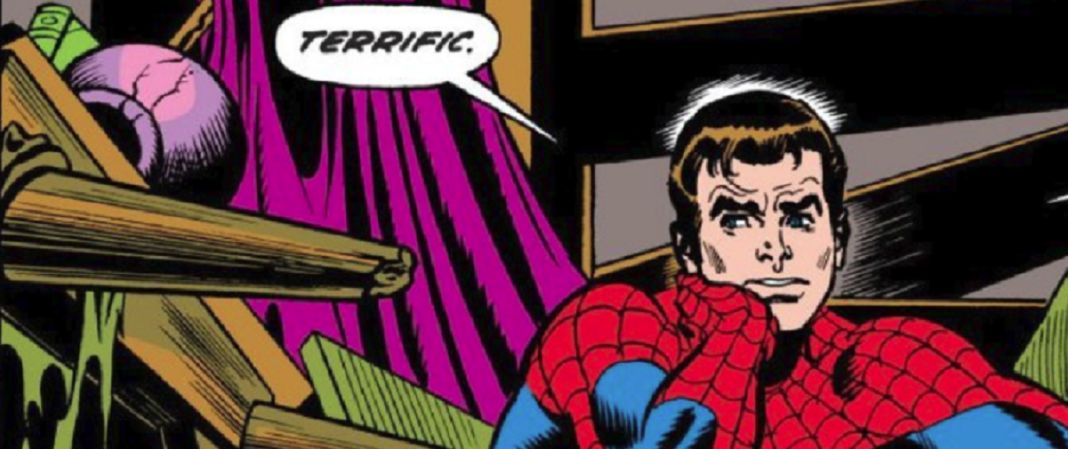
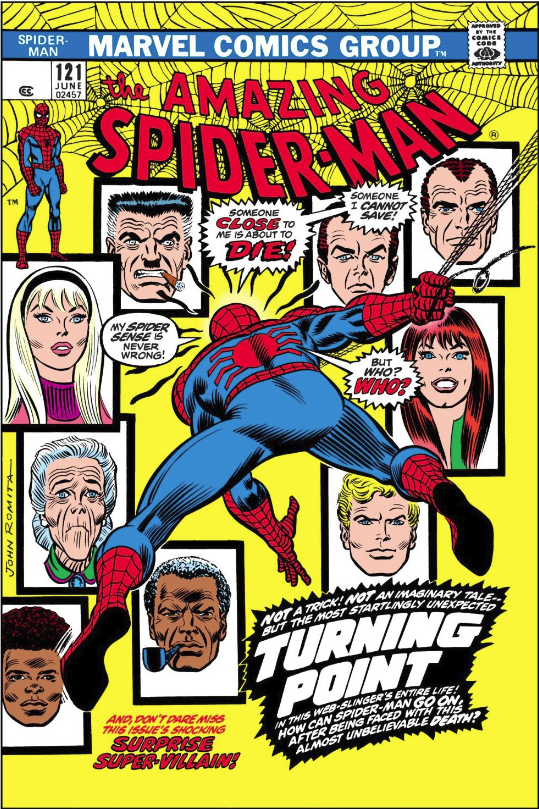 BACKGROUND
BACKGROUND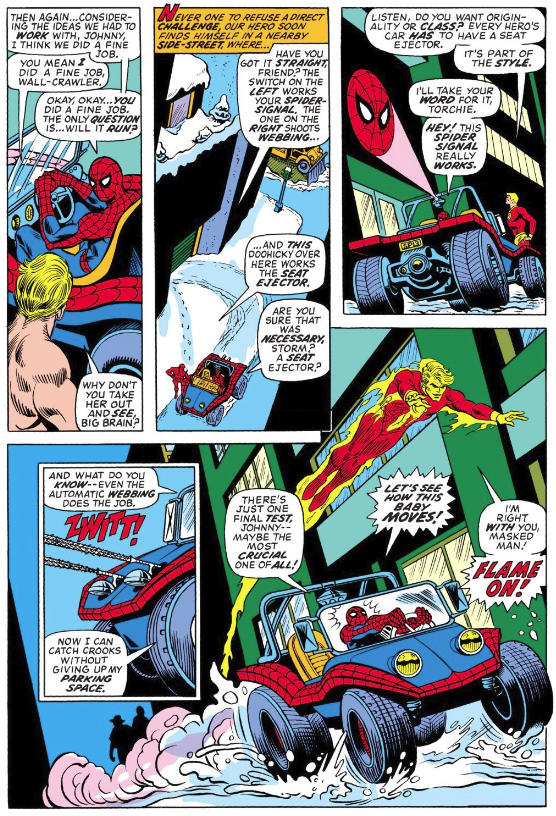
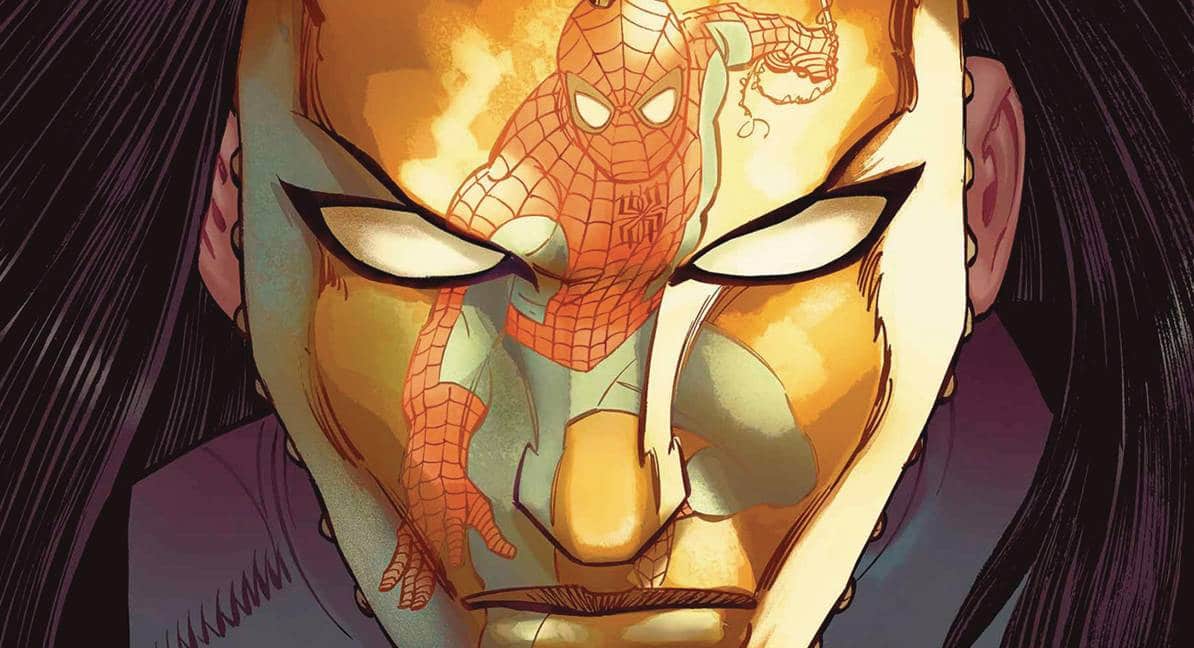
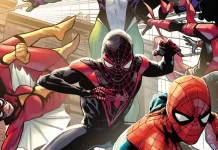





One of the first comics I read belonged to my older brother, it was Amazing Spider-Man #139. I still have it, but it’s in tatters from me reading and re-reading it so much when I could barely read. I thought the Grizzly was sooo cool. He actually beat Spider-Man and walks away!
Decades later I started buying comics on my own, started getting into buying back issues and eventually got the follow up comic to that story. Boy was that a let down!
As well, thanks for the fun memories guys!
Comments are closed.